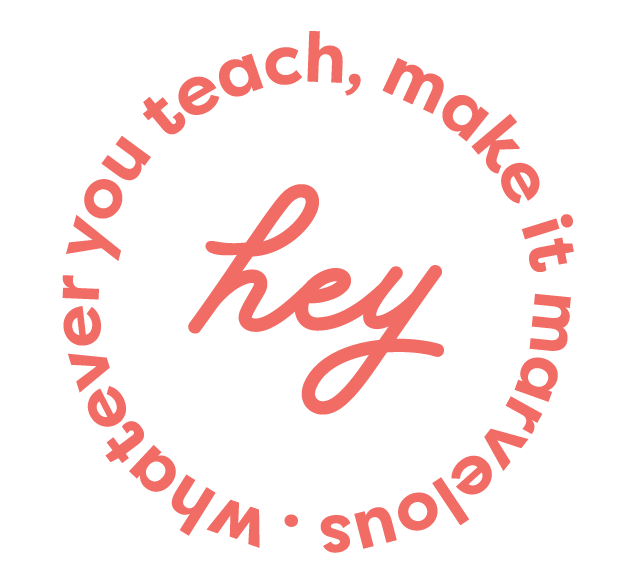Why use Squarespace to Build Your Website
Only a short time ago, building a website meant hiring a developer and a designer and paying for tech support.
The process was costly and slow and often yielded underwhelming results. Now, of course, some tools allow anyone to construct a simple, elegant site in just a few hours. (Even if you don't know a lick of HTML and have no idea what CSS means.)
Times have changed on the Internet, and for the better.
It's never a bad idea to get guidance and input from a pro when you're building a site for your online business; designers and developers will have insights into layout trends and coding tricks that make your site more efficient and effective.
That said, it's also always a good idea to create a clean, clear, easy-to-navigate informational site to serve your clients until you've got the resources to build something more custom.
So with that in mind, let's explore one of the most effective and easy-to-use site-building tools out there: Squarespace.
Top 5 Reasons Why You Should use Squarespace for Your Website
There are dozens of site-building platforms available, but we're longtime fans of Squarespace and frequently recommend it to new online teachers and coaches.
Some of the top reasons to consider choosing this tool include the following:
01 Squarespace is affordable
You'll choose from four plans, ranging from $12 per month to $40 per month, with the higher price points encompassing both the site itself and fully integrated e-commerce. All plans include a free custom domain; unlimited pages, galleries, and blogs; and unlimited bandwidth.
02 Squarespace is user-friendly
Drag-and-drop design capabilities make this tool a newbie's dream come true. The back-end interface is straightforward and makes editing a snap. Everything is intuitive, customizable, and virtually frustration-free. While you also gain access to basic analytics, you can easily connect your Google Analytics account in just a few steps.
03 Squarespace offers stellar tech support
All plans include 24/7 email support and outstanding live chat support from in-house experts. Responses are generally quick and helpful. Squarespace also has a decent archive of articles, videos, and community forums that can guide you through troubleshooting common issues.
04 Squarespace has truly gorgeous design templates
Templates that look stiff and template-y are a major turn-off, in our opinion. Fortunately, Squarespace provides an array of versatile, professional-level templates designed to look polished, elegant, and attractive. You really can't go wrong with any of their offerings.
05 Squarespace is mobile-friendly
SO important! If your site isn't mobile-friendly, most of your visitors won't even be able to view it properly and will quickly click away.
While it's true that platforms like WordPress allow a bit more customization, Squarespace makes the entire site-design process seamless and simple. You don't have to register your domain separately, figure out email, or track down a hosting service since all of those elements are already integrated into the platform.
Convinced? Great! Let's dig into some Squarespace best practices.
Tips for Creating a Beautiful, Useful Squarespace Site
Your website is often the first thing potential clients see when they're researching your brand, so naturally, you'll want to focus on building a site that aligns with your aesthetic, mission, and values.
Regardless of your specific design wants and needs, there are a handful of guidelines that will help make any Squarespace site look spectacular and function well.
Ready to create and sell your own courses, memberships, and live-streamed programs but don't know how or where to start?!
Watch our on-demand demo video to see what Marvelous™ can do for your online business.
Choose the right template
This tip is front-and-center because it's absolutely crucial. Bear in mind that the prettiest template available might not be the best fit for your site's content and navigational needs.
So before you commit, chart out how you want your site to flow, sketch out some basic navigation, and then investigate which templates will work within those parameters.
Cruise through template categories and look at example sites.
If you sell physical goods now (or plan to in the future), be sure to pick a template that has built-in e-commerce features.
Changing templates is relatively easy, but it will cost you some time, so you're better off making an informed choice from the start.
Leverage spectacular visuals
One of Squarespace's strengths is its natural symbiosis with imagery.
Very few templates allow you to design a text-heavy site, which is a good thing!
Select (or shoot) stunning photos that reflect your brand and use them to make your site alluring.
Pair fonts
Even if you don't geek out over typography, it's helpful to acknowledge the power of font choice. And since most websites have various text levels—headers, links, body text—selecting two complementary fonts will help make your pages easy to read and understand.
You generally want your body text to be a simple and readable font, but your header/title font can be a bit fancier.
Canva has some great resources on font pairing, including this article with examples and this online tool that helps you choose great font pairings. (All fonts and colors can be tweaked using the Squarespace style editor; click "Design" in the home menu, then select "Style Editor.”)
Pick colors carefully and strategically
If you've got a logo already, color selection is much simpler.
You want this site to reflect your brand, so the site colors should mirror the logo colors.
If you don't currently have a logo but have already selected some imagery for your site, pick colors that complement the images.
Your background should be white, period; don't make your text hard to read by going color-wild!
For a clean, impactful design, choose just two accent colors and apply them like so:
Use color 1 for your header and color 2 for navigation.
Use color 2 for titles. (You want them to be the opposite color from your header.)
Use color 2 for buttons. (You want them to reflect the title font.)
Introducing a third color can be tricky, but if you're dying to add one, use it sparingly. It can work as your color for live links or secondary navigation.
Create a Favicon
A favicon, (favorites icon), square graphic that small businesses use to represent their website.
Compared to font and color choices, your Favicon is minor. But it's one of those finishing touches that makes your site look thoughtful and complete.
It typically appears in the browser tab alongside the page title and URL. Having a recognizable logo or symbol here helps visitors identify the website at a glance; it also serves as a reminder of the place they've visited previously and are likely to visit again. As such, favicons are essential elements of website design and identity, helping businesses create a memorable presence online.
Turn your logo or a simple graphic into a .ico file using this generator. Then upload in Squarespace by navigating to Design / Logo & Title / Favicon (Browser Image). It may take a few hours to update, so don't panic if it doesn't start showing up right away in your browser tab.
Get feedback before launching
You definitely CAN build and launch a website in a day … but you probably shouldn't. Get input from trusted colleagues, or email screenshots to friends and solicit their honest opinions. So long as you haven't veered too far from the template, you've likely created a lovely and easy-to-use site. But even if you've missed the mark, Squarespace makes it so easy to edit and make changes that you can incorporate feedback in an hour or so and be ready to rock!
{Love the look and feel of Squarespace, but don't want to DIY? We highly recommend the design and branding work of Danielle Joseph at Function Creative Co.}














